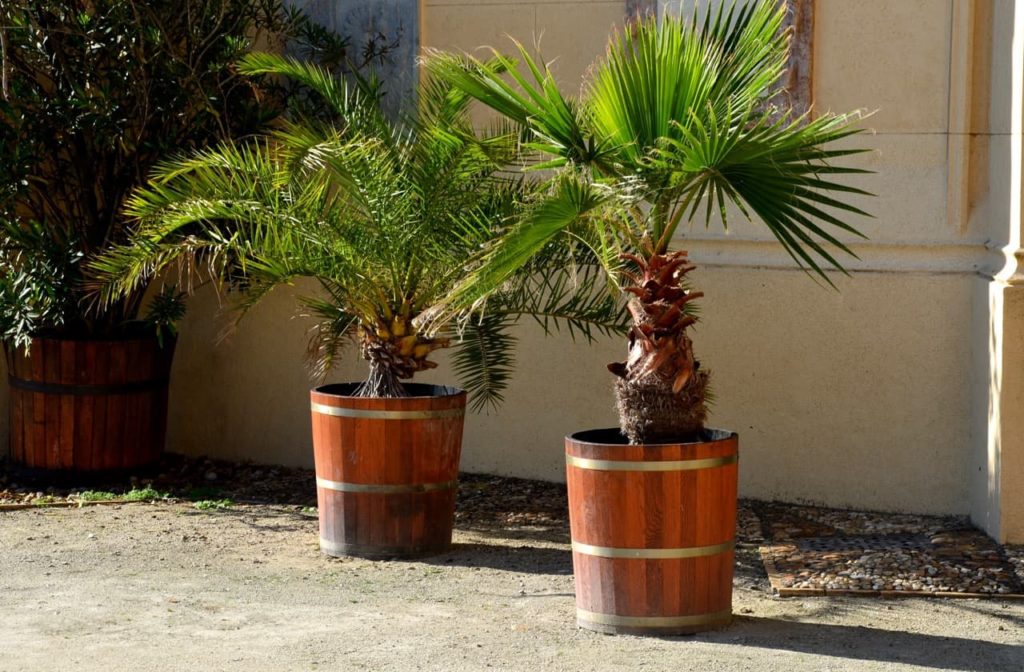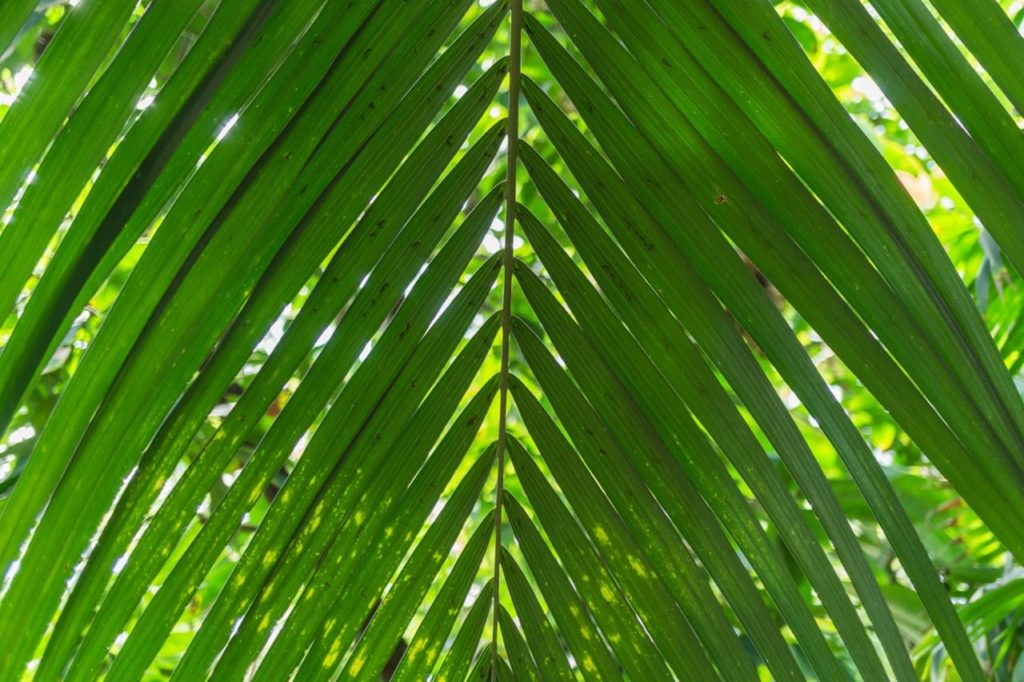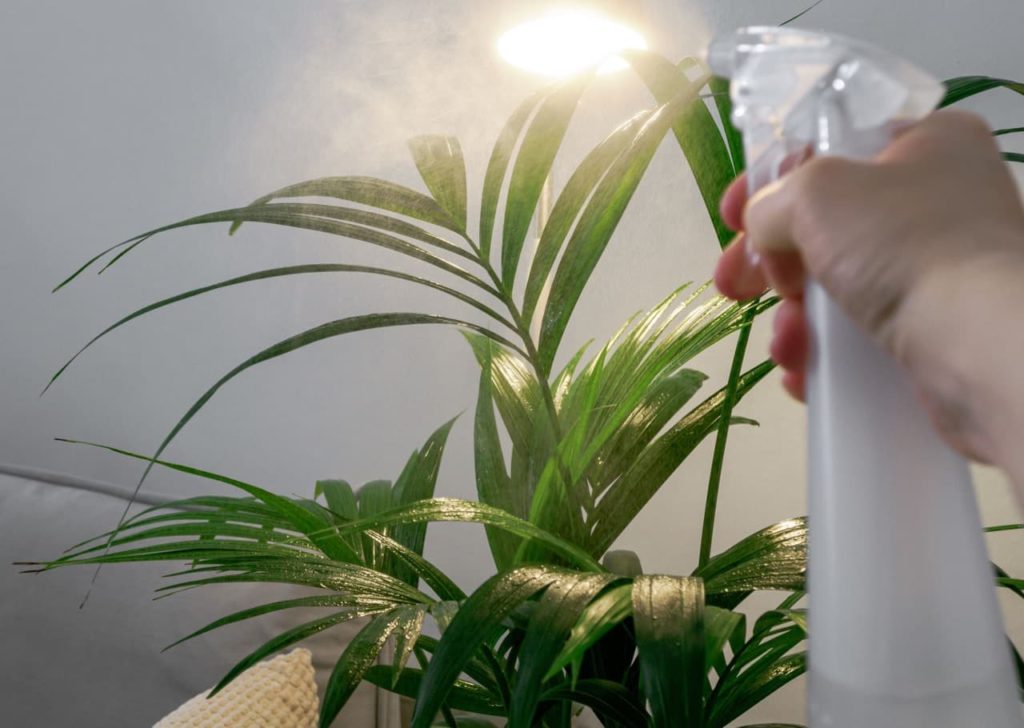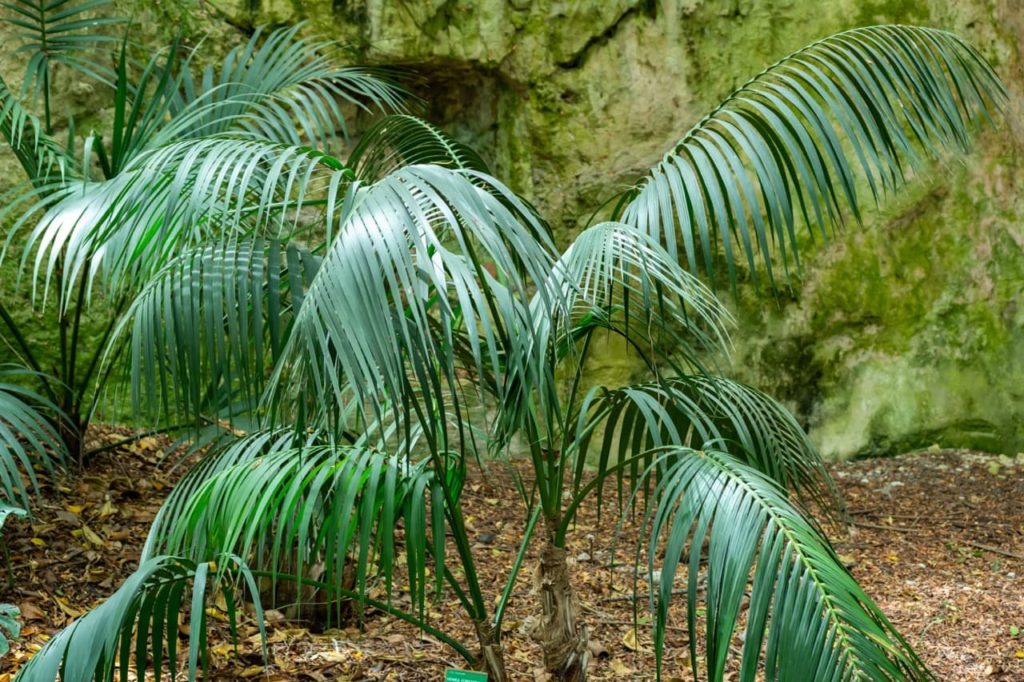Howea Forsteriana ‘Kentia Palm’ – How To Grow Them Successfully As Houseplants

HOUSEPLANTS > HOWEA-FORSTERIANA

Elizabeth is a Permaculture Garden Designer, Sustainability Consultant and Professional Writer, working as an advocate for positive change. She graduated from the University of St. Andrews with an MA in English and Philosophy and obtained a Diploma in Applied Permaculture Design from the Permaculture Association.
Reviewed By DAN ORI

Dan has over 27 years’ under his belt caring for plants and gardens. Working as a Horticultural Instructor and Consultant, he draws on a diverse range of experience that includes working as a Head Gardener, Tree Surgeon, Garden Centre Trouble Shooter, and writer of academic papers. Dan has a Level 3 Diploma in Horticulture and is currently a candidate for the RHS’s most prestigious award – The Master of Horticulture.
IN THIS GUIDE
KENTIA PALM GUIDES
The Kentia Palm is the quintessential ‘Parlour Palm’ of the Victoria era and is still very popular as a houseplant today.
Growing it indoors here, so far from its native range on an Australian island, is actually a very easy thing to do, which accounts for its enduring popularity with houseplant growers in temperate climes of the Northern Hemisphere.1Howea forsteriana (F.Muell.) Becc. (n.d.). Kew Royal Botanic Gardens. Retrieved June 20, 2023, from https://powo.science.kew.org/taxon/urn:lsid:ipni.org:names:667434-1
Overview
| Botanical Name | Howea forsteriana |
| Common Name(s) | Kentia Palm |
| Plant Type | Houseplant Palm |
| Native Area | Australia |
| Hardiness Rating | H1A |
| Foliage | Evergreen |
| Flowers | Small, shaped like stars, borne in groups of spikes, followed by little oval fruits (not usually seen in houseplants in the UK) |
| When To Plant | Year-round |
Sunlight
Preferred
Bright but indirect light
Exposure
Sheltered
Size
Height
8 – 12M
Spread
4 – 8M
Bloom Time
July to August
Soil
Preferred
Sand
Moisture
Well-drained
pH
Acidic to neutral
The Kentia Palm, which goes by the Latin name Howea forsteriana, is native to Lord Howe Island, Australia.2Downing, A., Atwell, B., Marais, K., & Downing, K. (n.d.). Lord Howe Island Palms. Macquarie University. Retrieved September 12, 2023, from https://www.mq.edu.au/__data/assets/pdf_file/0007/1217293/Plant-of-the-week-Lord-Howe-Island-Palms-Howea-spp.pdf
Seed exports from the island of this species first began in the 1870s and these palms soon became the height of fashion, seen in many of the swankiest palaces, hotels and homes.3Hutton, I. (2002, August 23). The History of Howeia. The European Palm Society. Retrieved June 14, 2023, from http://www.palmsociety.org/members/english/chamaerops/013/013-05.shtml
While the Kentia palm can be grown outdoors in warmer temperate climates as well as tropical ones, it is most commonly grown as a houseplant in the UK.
It has an RHS hardiness rating of H1A, meaning that it is best grown indoors or under glass throughout the whole of the year.
Howea belmoreana
Most of the time, Kentia Palms are sold as species types and not as named cultivars.
The species Howea forsteriana has been given an Award of Garden Merit by the RHS.
Another related species, also from Lord Howe Island, is Howea belmoreana (Belmore Sentry Palm), which is rather similar but somewhat smaller.

This can also be a great choice for indoor cultivation.
Kentia Palm Care
Kentia Palms do have the reputation of being relatively easy to grow.
However, in order to grow them successfully as houseplants, you do need to understand the conditions that they need to thrive and the care that they require.
The key details that you need are outlined below:
Light & Temperature
Kentia Palms need a location indoors that has bright but indirect light.
They like to be in a warm environment, ideally one with temperatures between 18-24°C.

Temperatures ideally should not drop below 15°C and certainly not below 12°C.
A bright and well-heated bathroom can be the perfect spot for a Kentia palm because, in addition to liking warmth, these palms also like a moderately humid environment.
Growing Medium
These palms should be potted up into a container filled with a soil-based growing medium; mixed with some sand or grit to improve drainage – or with composted bark and leaf mould in equal parts.
Watering
It is essential to water moderately during the summer months, allowing the palm to dry out, but it is also important to make sure that you do not overwater and that excess water can always drain away freely.
This is because waterlogging can be a major issue for this plant.

Over the winter months, only water sparingly.
Feeding
It is generally a good idea to feed Howea forsteriana with an organic liquid plant feed once a month during the summer, while the plant is in active growth.
A balanced liquid plant feed like a compost tea can be ideal.
Plant expert Dan Ori shares that watering with tap water can make the compost alkaline, which is not desirable for Howea:
“Top-dressing the top layer of compost each spring with fresh ericaceous compost is often enough to offset the effects of being watered by tap water as well as providing accessible nutrients for the plant,” he suggests.
Pruning
With Kentia Palms, no pruning is required.
Propagating
Kentia palms are propagated by seed, which is sown into a heated propagator that provides temperatures for germination which remain above 19°C.
Though not impossible, it would be challenging to grow your own Kentia Palm from seed and, of course, it would take a long time for them to grow into the larger houseplants that most people desire.

Therefore, people will mostly purchase Kentia Palms in pots.
Often, the plants that are purchased are actually several seedlings all in the same pot to give a lush and bushy appearance.
Common Problems
While Kentia Palms are not particularly prone to pest or disease problems, they can have issues with red spider mites, thrips, scale insects and other common indoor pests.
Despite this, Kentia Palms are not prone to problems if they are grown in the right environmental conditions and provided with the right care.
References
- 1Howea forsteriana (F.Muell.) Becc. (n.d.). Kew Royal Botanic Gardens. Retrieved June 20, 2023, from https://powo.science.kew.org/taxon/urn:lsid:ipni.org:names:667434-1
- 2Downing, A., Atwell, B., Marais, K., & Downing, K. (n.d.). Lord Howe Island Palms. Macquarie University. Retrieved September 12, 2023, from https://www.mq.edu.au/__data/assets/pdf_file/0007/1217293/Plant-of-the-week-Lord-Howe-Island-Palms-Howea-spp.pdf
- 3Hutton, I. (2002, August 23). The History of Howeia. The European Palm Society. Retrieved June 14, 2023, from http://www.palmsociety.org/members/english/chamaerops/013/013-05.shtml
